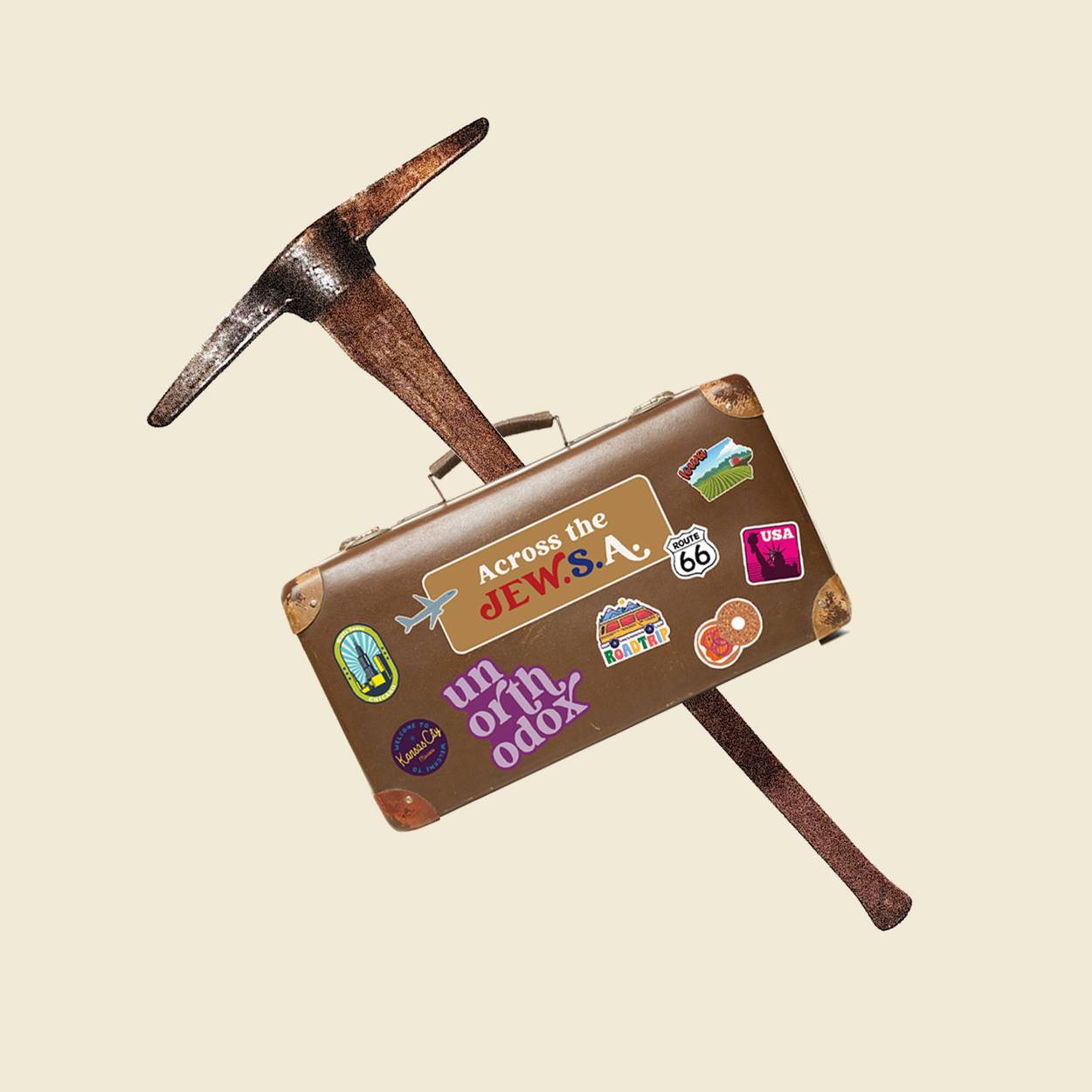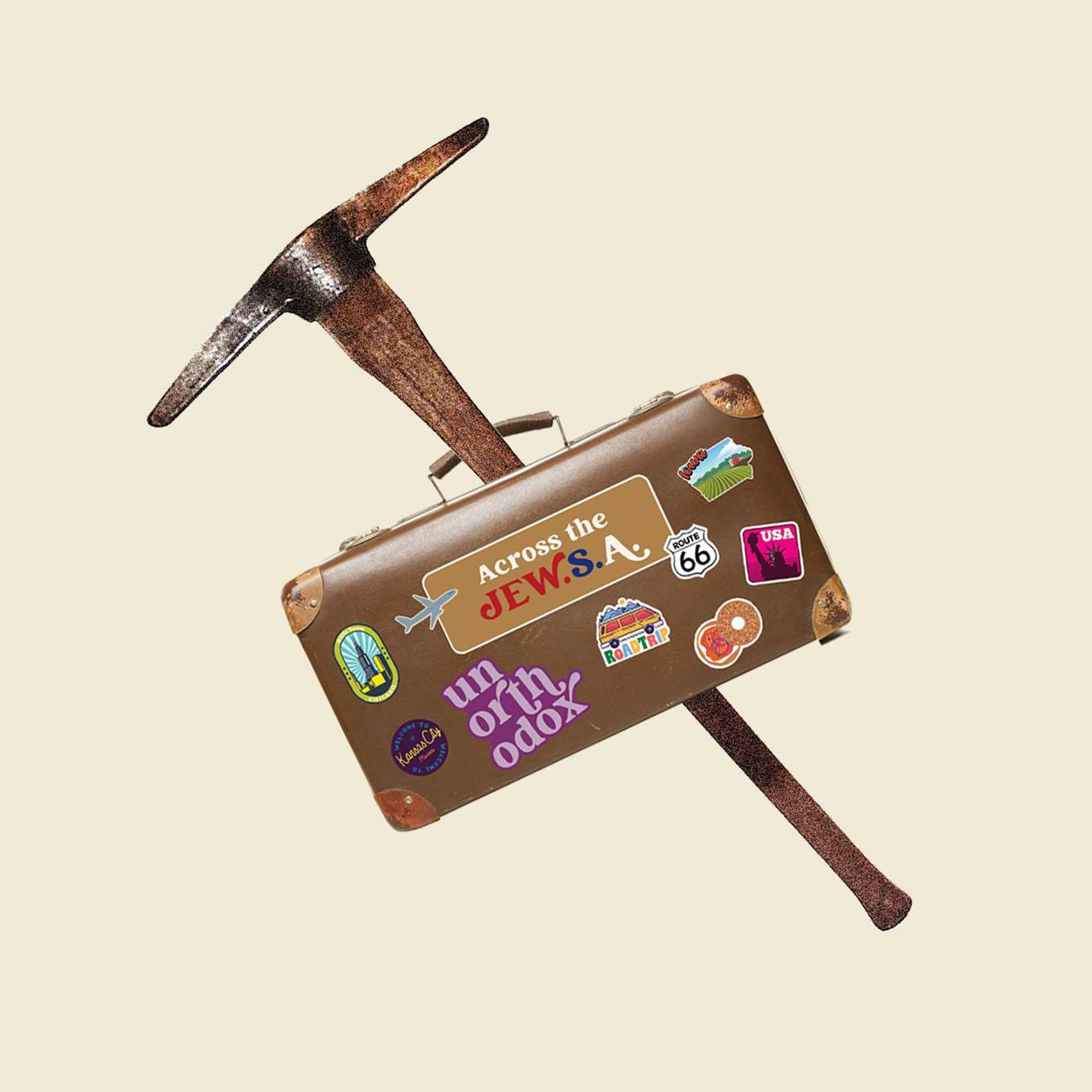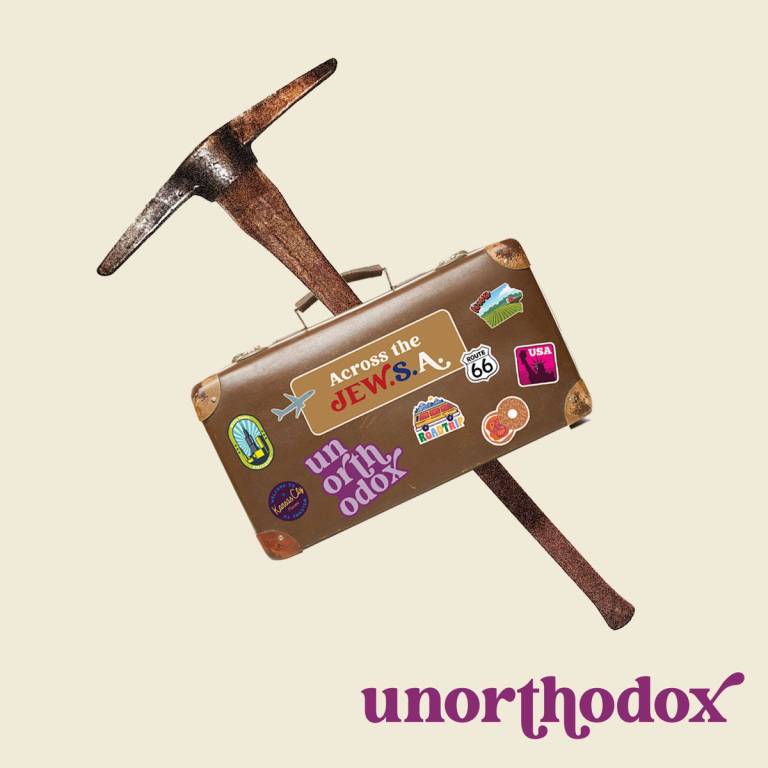The Jews of Deadwood
Digging up South Dakota’s surprising Jewish history on our trip ‘Across the JEW.S.A’




When we launched this series, Across the JEW.S.A, the idea was simple: Go and visit communities all over America to see what Jewish life looks like outside of New York or Los Angeles or Chicago or anywhere else you’d expect to find Jews. So we went to Seattle, and Louisville, and New Orleans. But in some places, the Jewish story is told best through historical records and artifacts from long ago. We wanted to take a look at the legacy that one group of prospecting Jews left in the most unexpected of places.
Where? Deadwood, South Dakota.
The town’s history reads like something straight out of Hollywood, which is probably why the HBO series Deadwood is such a hit. One day in 1874, Colonel George Armstrong Custer, two years short of his death at Little Bighorn, led an expedition to the Black Hills of South Dakota and announced the discovery of gold. Naturally, settlers flocked to the region, hoping to get rich quick. They didn’t care that the area was sacred to the Lakota people, who called it Owayasuta, meaning “to approve things.” The newcomers noticed a bunch of dead trees in the gulch and gave their new town its new name: Deadwood.
Laws were lax, and Deadwood soon became home to such legendary Wild West figures like Wild Bill Hickok and Calamity Jane. The town’s population soon mushroomed to 5,000, then 12,000, and kept growing from there. But Deadwood needed supplies. And Deadwood presented opportunities. And Deadwood didn’t much care about pedigree. Which is why, pretty soon, Deadwood welcomed the Jews.
“The Jewish population was just one of many minorities that came out to the Black Hills in this area,” explained Mike Runge, the city archivist and collections manager for the city of Deadwood and Deadwood Historic Preservation Commission. “This area became basically a large melting pot of different nationalities that came out here with the idea first to make money, but then second of all, to actually settle and raise their families out here as well.” Many of the Jewish arrivals became merchants on Deadwood’s Main Street.
Deadwood today is more Holiday Inn than Doc Holiday, and Main Street is lined with casinos and T-shirt shops and other tourist attractions. But down in the basement of City Hall, Runge keeps Deadwood’s history alive, including its storied Jewish past. Recent archeological excavations throughout Deadwood have unearthed artifacts dating back to the 1876 Gold Rush, including evidence of the area’s early Jewish population: small shards of carbonized paper with Hebrew inscriptions on them, including the phrase “l’shanah haba’ah,” the concluding sentence of the Passover Haggadah. That means that in the late 1800s, the Jews of Deadwood were conducting Passover Seders, eating matzo, and drinking four cups of wine just down the road from infamous Deadwood residents like Wild Bill Hickok. According to Runge, these are the first artifacts found in the ongoing excavations that relate specifically to the Jewish population.
The other evidence of Deadwood’s early Jewish population is at Mount Moriah Cemetery, whose wrought iron gates (an early 2000s recreation of the original 1890 gates) feature, next to symbols for a local fraternal order and the Deadwood Masons, a prominent Star of David. The Jewish section of the cemetery is called Mount Zion, located atop a hill known as “Hebrew Hill.”
Mount Moriah isn’t an ordinary cemetery. For one thing, it’s impossibly gorgeous, with dramatic views of the Black Hills covered by pine trees and black-eyed Susans, a yellow wildflower that adds to this already stunning landscape. For another, it’s a tourist attraction, drawing upwards of 100,000 visitors every year, who flock to see the graves of Martha Canary, better known as Calamity Jane, and her pal Wild Bill Hickok. But strangest of all are the names of the small streets that divide the main cemetery into sections: Jacob, Boaz, David, Jerusalem. Even before you get up the hill to Mount Zion, where the Jews who helped build the town are buried, it feels like a deeply Jewish place.
The Jews of Deadwood purchased this section of the cemetery in 1892, and each gravestone features Hebrew letters and tells the story of a Jewish individual, or family, who helped build this small outlaw town into an oversize entry in the collective American imagination. There’s Judge Nathan Colman, the town’s lay rabbi, who built the town’s first synagogue in the basement of his family’s home, and his daughter Blanche Colman, South Dakota’s first congressional representative. Their neighbor Harris Franklin, a well-known businessman in Deadwood, is buried there, along with so many more. The graves speak to a vibrant and storied past, physical markers that are all the more poignant given the latest statistics, which put the number of Jews living in the state of South Dakota at fewer than 500. But all across Mount Zion, small rocks rest atop the graves, tributes left here by visitors over the years, all in their small way keeping Deadwood’s Jewish history alive.
Listen to our tour of Deadwood’s Jewish history here:

Across the JEW.S.A was created with support from the Jewish Federations of North America.
Tablet Studios is the premier destination for smart and entertaining Jewish audio content. Our podcasts include Unorthodox, What Really Matters, Take One, and the limited-run series Gatecrashers, Adventures with Dead Jews, Radioactive: The Father Coughlin Story, and The Franchise.